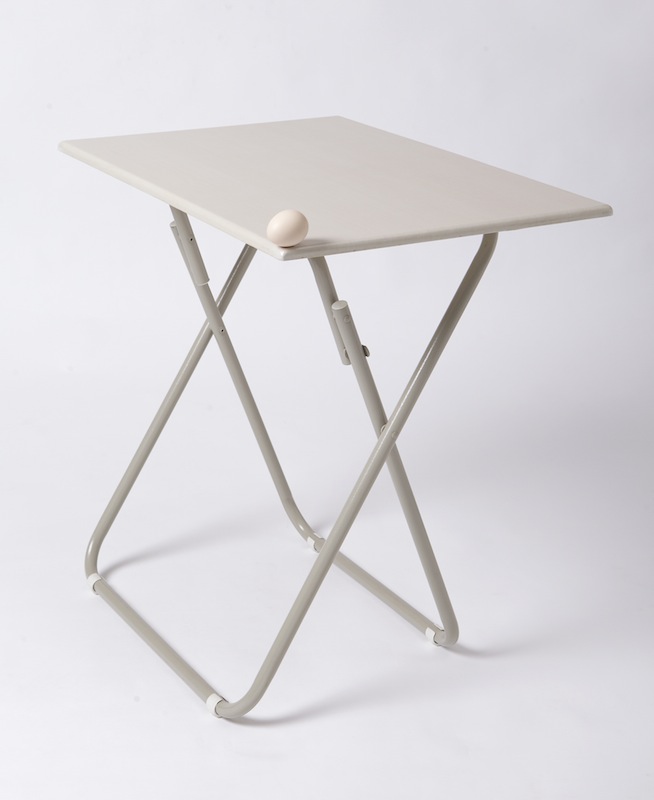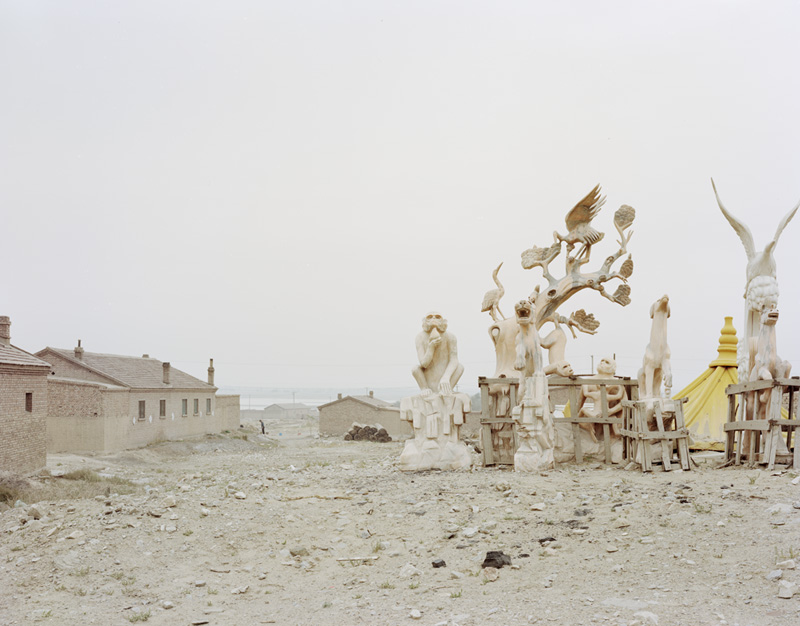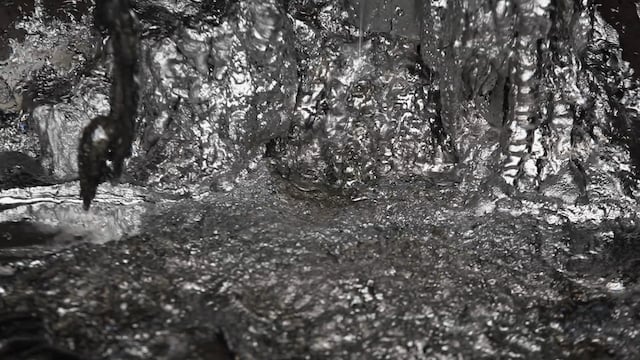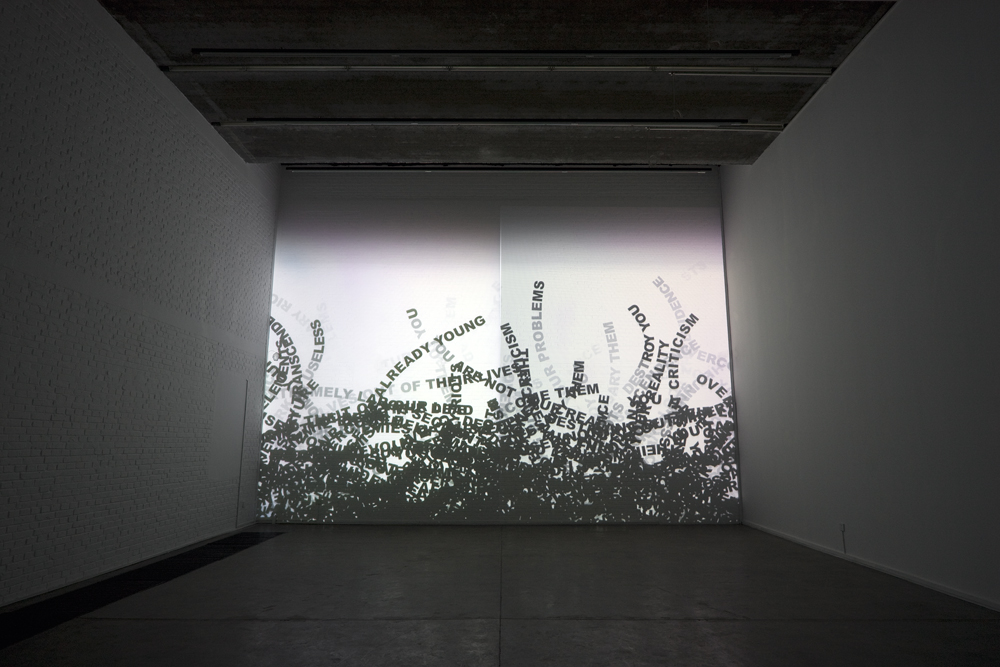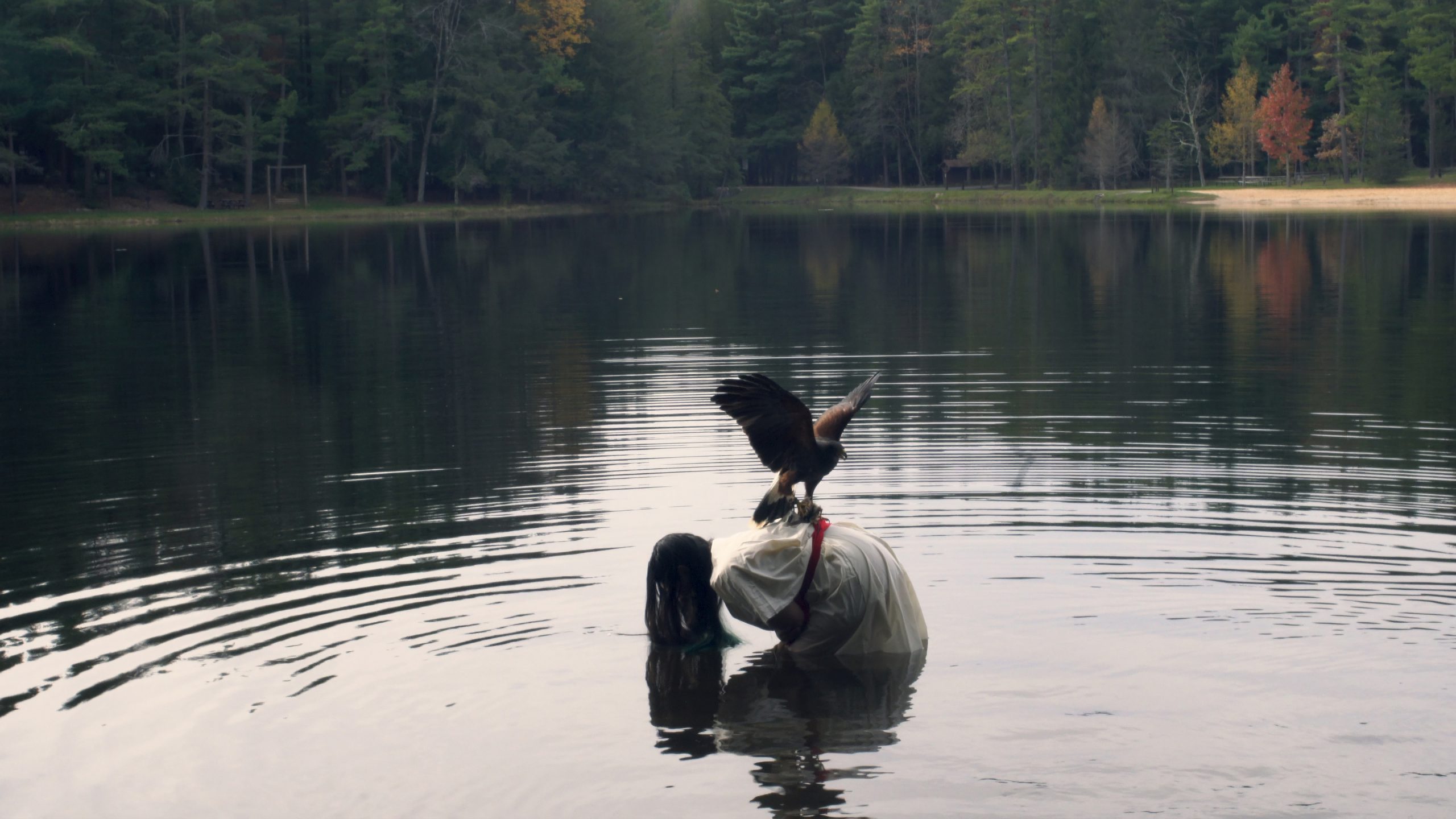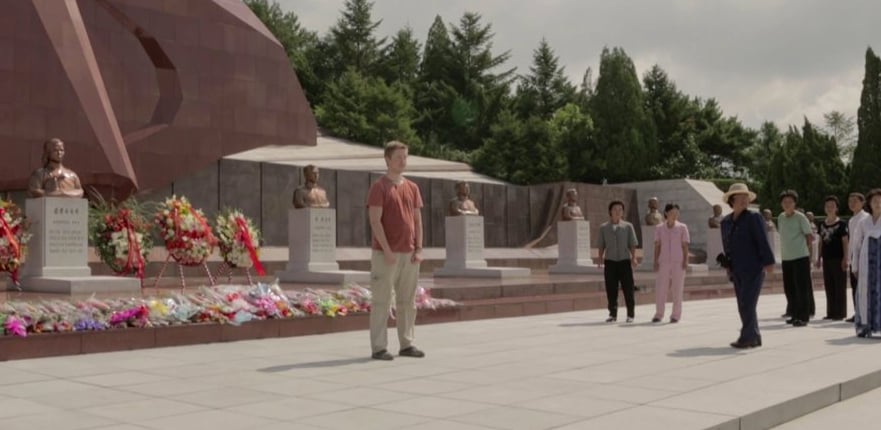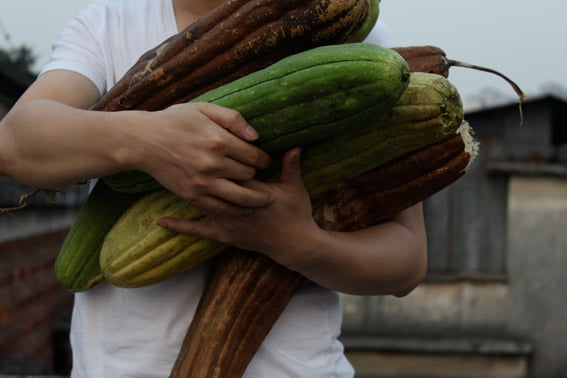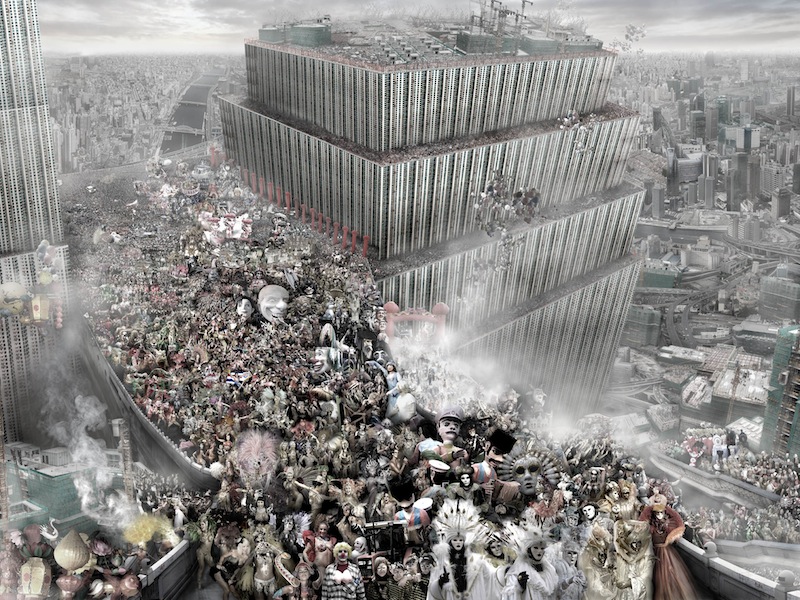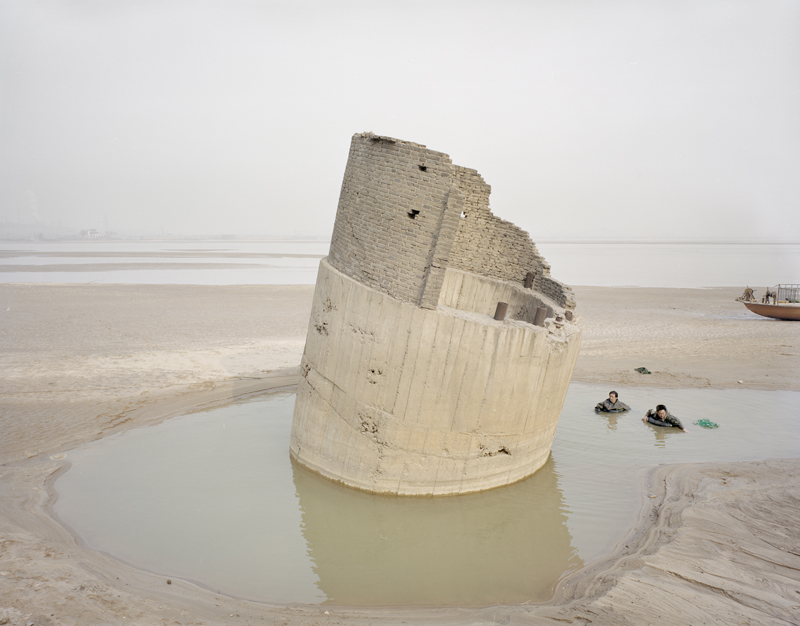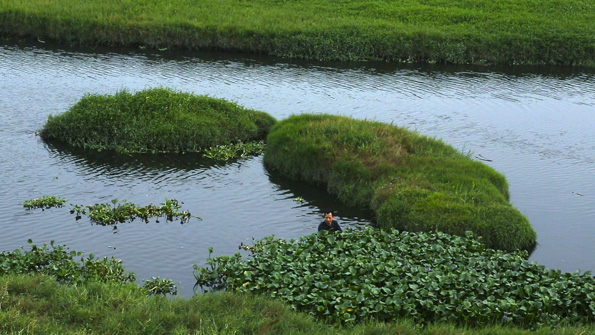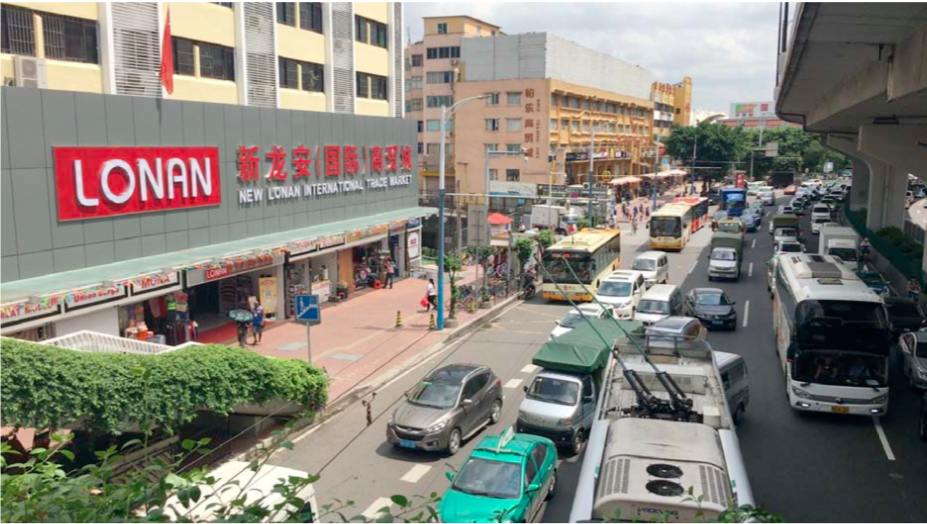
© » KADIST
Hu Yun
This research-based artwork acts as a memorial to early twentieth century European exploration of China. An antique open suitcase reveals a pile of rubbings and an air-dried peony, while projected photographs of the Chinese landscape appear as a slideshow on the gallery wall. The artifacts refer to a 1908-1909 expedition of naturalists, missionaries, and colonists to the west of China, which ended abruptly with the death of one of the travelers by unusual circumstances.

© » KADIST
Li Liao
A Slap in Wuhan documents Li Liao’s performance in Wuhan, China on January 8, 2011. Li waits at the entrance of the Optical Valley walking street. An anonymous person who was recruited online approaches Li and slaps him in the face.

© » KADIST
Cao Fei
Since 2007, Cao Fei has radically focused her work on Second Life, an online space that virtually mimics “the real world” and includes everything from the expression of ideas to economic investment. Referring to China’s modernization and its capitalist and utopic visions, RMB City explores the ways in which global communication impacts imagination, values, and ways of life. By appropriating virtual reality, Cao Fei opens up a new frontier in the field of art production that surpasses conventional materiality and invites collaboration and exchanges with her public and clients.

© » KADIST
Jiang Pengyi
Unregistered City is a series of eight photographs depicting different scenes of a vacant, apparently post-apocalyptic city: Some are covered by dust and others are submerged by water. Yet, ambiguous lights blink from buildings and yachts still sail on the water, and further observation reveals these structures to be miniatures manipulated by the artist through Photoshop and other postproduction image tools. The model city’s surroundings are themselves real abandoned spaces, perhaps an empty room, a wait-to-be demolished building, or a discarded bathtub.

© » KADIST
Cao Fei
Cao Fei’s video La Town, 2014 depicts a mythical metropolis that has been destroyed by unknown forces. Although the damage is obvious, as the camera navigates across the elaborate, handmade dioramas, the inhabitants of La Town carry on with their activities and the normality of everyday life pervades. As the film progresses, the latent chaos and violence begin to emanate from every corner of the miniature city: a bloody briefcase left on the ground, a kidnapping scene, an axe murderer on the loose, a ferocious man-eating octopus—all rendering the darkness of this new post-apocalyptic world order.

© » KADIST
Cao Fei
Diversionist is part of the Cosplayers Series from 2004. In Cosplayers Cao Fei depicts the popularity among Asian youths of “cosplay” in which daily life is merged with images of video games and popular films. For many, this virtual reality is an outlet to “transcend” the paradox of a developing society in which the pleasures of consumption and depression of alienation go hand-in-hand.

© » KADIST
Jiang Zhi
In the video installation Tremble, Jiang projected the life-size images of seven naked men and women onto seven individual screens. Each person displays a different facial expression and body position such as reading a book, arms open for a hug, holding a knife, raising a fist to take an oath. Each gesture reflects some essential social aspect of everyday life: hugging is about caring, taking oath has to do with politics, reading relates to acquiring knowledge, and raising a knife indicates violence.

© » KADIST
Jiang Zhi
5 is a three channel video about the dualities of death and resurrection, reminiscence and fantasy, chronological and retrospective narration. The main video features two dancers intertwining, caressing in trancelike movements, with intimacy eventually leading to scarring and bleeding. Towards the end, the trace of bodily movements and fluids crescendo in an image of a skull in a synthesis of performance, painting and theater.

© » KADIST
Jianwei Wang
In Dilemma: Three Way Fork in the Road , Wang references Peking opera in a re-interpretation of traditional text. The performance begins with two broad-knife-wielding characters circling each other in conventional operatic steps. Oblivious to the presence of these two on stage, additional characters, in a mix of period costume and contemporary dress, enter the stage in increasing droves to consume a various of foods laid out on a table until they collapse and pile on top of each other.

© » KADIST
Yang Guangnan
In Action no. 1 Yang Guangnan reflects on the interiority and exteriority of human-technological experience with mechanical gestures that are semi-human and semi-machine. A hanged shirt mounted upon the artist’s machine rhythmically bounces and rotates in a way that suggests a skeletal interior.

© » KADIST
Wang Taocheng
Reflection Paper No. 2 is one of four videos in which Wang attempts to accurately illustrate the writings of influential Chinese Eileen Chang, who published her works during the Japanese occupation of China. Image and text reflect on the everyday experiences of women in society, family, marriage, love, and death.

© » KADIST
Kwan Sheung Chi
A Flags-Raising-Lowering Ceremony at my home’s cloths drying rack (2007) was realized in the year of the 10th anniversary of the establishment of The Hong Kong Special Administrative Region of the People’s Republic of China. The artist asked his parents to perform a flags-raising-lowering ceremony on their home’s cloths drying rack, with the HKSAR regional flag, and the flags of PRC and The UK. Artist Lee Kit hand-painted the HKSAR regional flag following the detail instructions in “The State’s Standards of The People’s Republic of China, GB16689-1996”, issued by The State Authority of Technical Monitoring.

© » KADIST
Yang Guangnan
Itch explores the relationship between technology and daily human experience with a motorized arm that extends from within the gallery’s wall, moving up and down while holding a projector that shows a desperately scratching pair of hands.

© » KADIST
Jin Shan
Retired Pillar represents the death and deterioration of legacy of colonial Shanghai. The silicon Corinthian column lays horizontal upon its pedestal, inflating and deflating in the rhythm of difficult breathing, as if exhausted by its lifelong labor. Shan comments on the deterioration of the influence of French colonialism within Shanghai as well as the adoption of Western forms of architectural decoration as symbols of wealth and power.

© » KADIST
Fang Lu
No World is an action-filled video work filmed inside an abandoned museum in the Songzhuang area outside Beijing. Without using any dialogue, Lu created an artificial scenario where she instructed actors with a list of tasks to gesturally mime scenes from news and journalistic images outside China. Through an intuitive self-trained mimicry, these acts simultaneously became moves in a game as well as a daily routine.

© » KADIST
Fang Lu
Canton Novelty by Fang Lu captures the adventure of a group of three girls, Ruohan, Lily and Zoe on a summer vacation in Guangzhou, China. Throughout the course of the trip, they film themselves with their cell phones singing in a karaoke room, shopping at a hardware store, sitting at a park, hanging out in a hotel room and exploring a neighborhood looking at vacant apartment ads. Although their days may seem uneventful, the girls seemingly discover the ability to perform impossible “miracles,” including cooking a full pot of rice from three grains, summoning objects to appear and disappear, and turning off street lamps on command.

© » KADIST
Kan Xuan
In Kan Xuan’s four-channel video Island , a series of objects like nail clippers, hairbrush, toothpaste, and house decorations are shot in close-ups. These highly polished and aestheticized images create a poetic visual flow. However, in front of each object lies a coin of different value—two yuan, one pound, one euro, one dollar—that silently reveals the material value of the household supplies.

© » KADIST
Yan Xing
Sexy shows Yan Xing unsuccessfully trying to reach orgasm in freezing temperatures among the falling rocks and howling winds of a precarious canyon. His erotic failure leaves the voyeur-viewer unfulfilled and disappointed. The work explores notions of identity, masculinity, sexuality, voyeurism, and cultural taboos.

© » KADIST
Lu Chunsheng
Lu has developed an oeuvre that consists of characters in bizarre situations. The large-scale photograph I Want to Be a Gentleman depicts nine men standing like statues on display in a museum on tall plinths in front of a run-down industrial building. Lu’s brooding films and photographs are preoccupied with China’s industrial era and communist history.

© » KADIST
Yang Xinguang
Although seemingly unadorned at first glance, Yang Xinguang’s sculptural work Phenomena (2009) employs minimalist aesthetics as a means of gesturing towards the various commonalities and conflicts between civilization and the natural world. Comprised of rudimentary planks of wood hammered together into a rectangular form, Yang’s work uses reclaimed materials from everyday life and seems deliberately in conversation with Arte Povera, the art movement that originated in Italy during the late 1960s where practitioners produced art from found and common materials as an act of resistance against the decided commercialization of the art world through market economies. Yang, by extension, pays close attention to his materials in attempt to release the forms within them rather than impose his own.

© » KADIST
Yan Xing
The title of this series – Two videos, three photographs, several related masterpieces and American art – is paradoxical, suggesting the work is conceived in relation to its medium and a situation in art history and the region of the world in which it was made. Paradoxical but in the end, often true of the way in which art history is written. The presence of black men and the term “American Art” brings us back to Robert Mapplethorpe’s Black Book .

© » KADIST
Li Ran
The four-channel video installation Same Old Crowd departs from the documentation of an unknown city and takes place in an ambiguous temporal and spatial frame. Twelve characters (amateur actors hired by the artist) appear in black-and-white in highly stylized surroundings wearing patterned cloths. The identities or time period of the characters, all deprived of languages, are impossible to determine.

© » KADIST
Yang Zhenzhong
Peasant Sensation Passing Through Flesh – 3 consists of a massage chair fixed to a wall. With its cushions removed to reveal its internal mechanisms, the chair’s programmed rubbing, kneading, patting, and vibrating motions create a strange sight and soundscape. The work explores the relationship between flesh and machine as they come together through technologically simulated social behaviors, challenging normative ideas about human interaction.

© » KADIST
Li Ran
In his video work Beyond Geography , Li dramatizes the role of the artist-as-imitator to the point of sheer parody. Dressed to toe in the costume of a typical Discovery Channel adventurer-explorer, the artist dashes suavely through the uncharted jungle habitat of a primitive tribe. Li modulates his own voice in laughably accurate mimicry of the dubbed Discovery Channel protagonist familiar to Chinese viewership, daringly gulping fresh water from a river, expertly admiring exotic vegetation, and whimpering in fear of the dark sounds of the night (screaming, even, as he trips on a human skull) in an full-scale exaggeration of a nature show personality.

© » KADIST
Xiaoyun Chen
In the video work Drag, a man in a dark room pulls on the end of a rope. In midst of sounds of heavy breathing, the camera presents alternating scenes of a man and the shadow of a man wearing a long, pointed hat cast against a wall. Insinuating a sinister mood, the man and the shadow struggle to control the scene through alternating tugs and releases of a rope.

© » KADIST
Sun Xun
Sun Xun’s lushly illustrated, dynamic short film Mythological Time is a dreamy chronicle of rapacious industrial development, the mythical qualities of state propaganda, and the constancy of change, as experienced by an unnamed coal mining town. While it is not named in the film itself, the town at the center of Mythological Time is a re-imagined incarnation of Sun’s hometown of Fuxin, in the northern Chinese province of Liaoning. Sandwiched between North Korea and Inner Mongolia, Fuxin is a poor coal-mining region that used to contain one of China’s largest open-pit mines and has historically been the site of significant conflict, thanks to its rich mineral resources.

© » KADIST
Qiu Anxiong
A Portrait: Covering and Cleaning is an installation of six black-and-white video projections. Each video depicts a portrait with features changing continuously and quickly into different persons, animals and symbols. Driven by the evolving contents of the screen itself, this piece showcases the form and material of Qiu Anxiong’s working method, which relies on precisely planned storyboard sketches drawn in pen on A4 paper.

© » KADIST
Xiaoyun Chen
The central point of Vanishing Point is the most direct physiological reaction of the body to the environment. Chen Xiaoyun has added a written narrative and a poetic quality to his works. Image fragments containing different pieces of information are linked together by the text, their interplay producing a synesthesia effect.
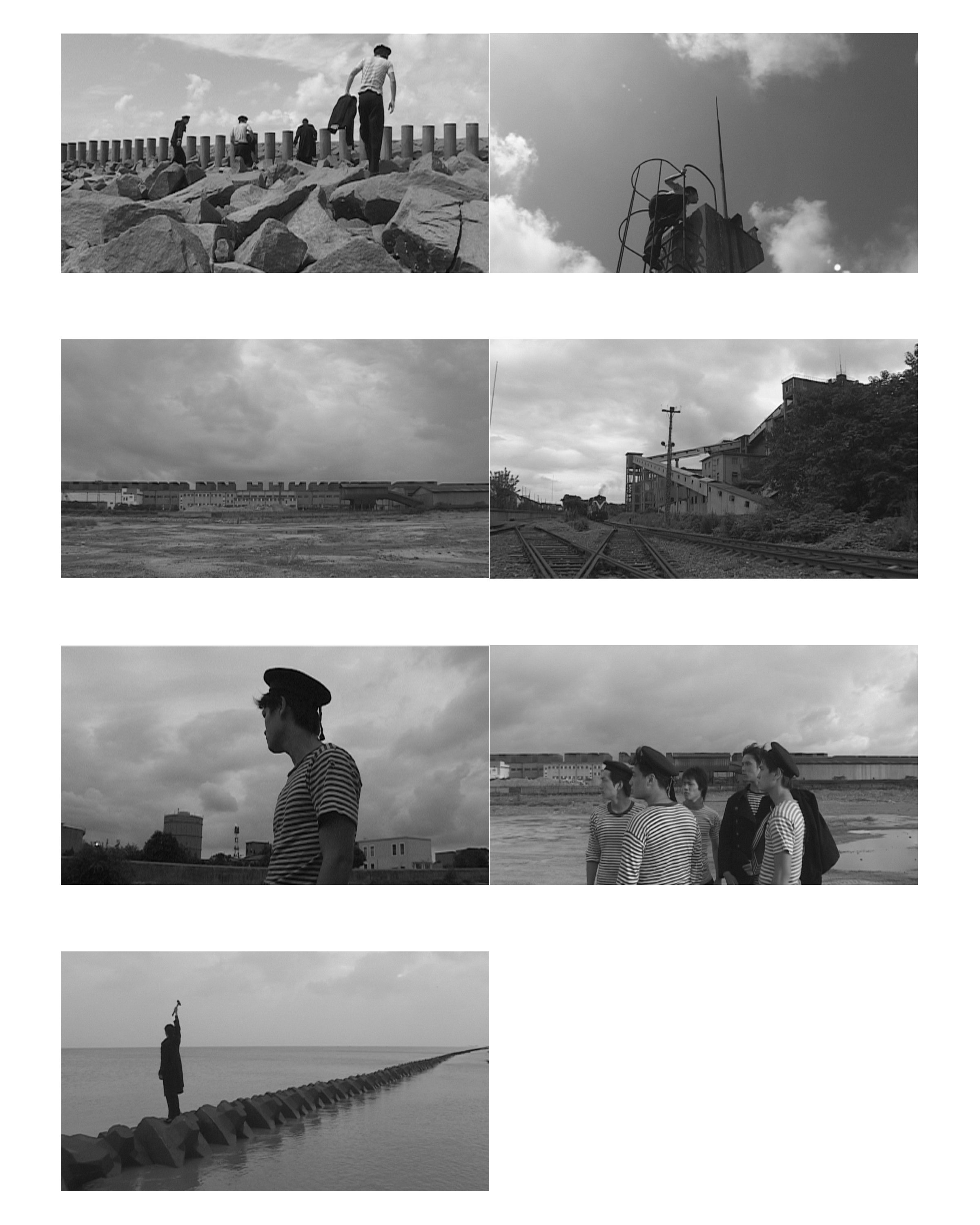
© » KADIST
Lu Chunsheng
A mesmerizing experience of a vaguely familiar yet remote world, History of Chemistry I follows a group of men as they wander from somewhere beyond the edge of the sea through a vast landscape to an abandoned steel factory. Using long shots and atypical settings, Lu Chunsheng enigmatically refers to a distant history while conveying the sense of dislocation wrought by successive stages of modernization. The combination of elaborate landscape shots from the suburbs of Shanghai and Lu’s signature style of spare and minimally crafted acting offers a surreal view of human behavior in spaces marked by the hulking remnants of China’s extraordinary development.

© » KADIST
Xiaoyun Chen
The image of rusted nails, nuts and bolts as shrapnel sandwiched between a fried Chicken burger highlights the contrast between decadence and destruction. Chen emphasizes the direct sensational impact of his work to allow his viewer to question the boundary between reality and art. The image of nails as food harks at a visceral relationship with the title, which cries the tone of a manifesto.
Xiaoyun Chen
- location: Hangzhou, China
- year born: 1971
- gender: male
- nationality: Chinese
- home town: Hubei Province, China
Wang Tuo
Through film, performance, painting, and drawing, artist Wang Tuo interweaves disparate realities through archives, modern history, myth, and literature...
Kwan Sheung Chi
Kwan Sheung Chi obtained a third honor B.A...
Cao Fei
- location: Beijing, China
- year born: 1978
- gender: female
- nationality: Chinese
- home town: Guangzhou, China
Lin Yilin
- location: Beijing & New York
- year born: 1964
- gender: male
- nationality: Chinese
- home town: Guangzhou, China
Zhou Tao
Artist Zhou Tao has a diverse and varied practice, and notably, he denies the existence of any singular or real narrative or space...
Du Zhenjun
- location: Paris, France
- location: Shanghai, China
- year born: 1961
- gender: male
- nationality: Chinese
- home town: Shanghai, China
Zhang Kechun
Photographer Zhang Kechun documents striking scenery that meditates on the significance of landscape in modern Chinese national identity...
Fang Lu
Fang Lu uses intimacy as a place for self-expression in her videos and draws out mundane moments from everyday life as a strategy to heighten one’s awareness of existence from the rest of the world...
Yang Guangnan
- location: New York City, United States
- year born: 1986
- home town: Inner Mongolia, China
Chen Chieh-Jen
- location: Taipei, Taiwan
- year born: 1960
- gender: male
- nationality: Chinese
- home town: Taoyuan, Taiwan
Leung Chi Wo and Wong Sara
Leung Chi Wo tends to highlight in his art the boundaries between viewing and voyeurism, real and fictional, and art and the everyday...
Pak Sheung Chuen
- location: Hong Kong, China
- year born: 1977
- gender: male
- nationality: Chinese
- home town: Fujian, China
Chen Shaoxiong
- location: Beijing
- location: Guangzhou, China
- year born: 1962
- gender: male
- nationality: Chinese
- home town: Shantou, Guangdong Province, China
Sun Xun
- location: Hangzhou, China
- year born: 1980
- gender: male
- nationality: Chinese
- home town: Fuxin, Liaoning Provence, China
Li Xiaofei
Li Xiaofei initiated Assembly Line in 2010, an ongoing project that records industrialized social change not only China, but as it occurs internationally...
Jiang Zhi
- location: Beijing
- location: Shenzhen, China
- year born: 1971
- gender: male
- nationality: Chinese
- home town: Yuanjiang, China
James T. Hong
James T...
Lu Chunsheng
- location: Shanghai, China
- year born: 1968
- gender: male
- nationality: Chinese
- home town: Changchun, Jilin province, China
Li Ran
- location: Beijing, China
- year born: 1986
- gender: male
- nationality: Chinese
- home town: Hubei Province, China
Yan Xing
- location: Beijing, China
- year born: 1986
- gender: male
- nationality: Chinese
- home town: Chongqing, China
Bo Wang
Through new media, installation, and video and film, Bo Wang’s practice embodies sociopolitical and cultural subjects in contemporary China and beyond...
Cao Shu
Cao Shu’s works span three-dimensional digital moving images, sound installation, and interactive games...
Tsang Kin-Wah
- location: Hong Kong, China
- year born: 1976
- gender: male
- nationality: Chinese
- home town: Shantou, Guangdong Province, China
Tao Hui
Tao Hui indeed believes that fairy tales can ease people’s intensive mind...
Liu Chuang
Known for engaging socio-economic matters as they relate to urban realities, Liu Chuang proposes different understandings of social systems underlying the everyday...
Mimian Hsu Chen
Costa Rica-based artist Mimian Hsu works with photography, documents, typography, and objects to construct site-specific installations, performances, and projects that explore intersecting cultural identities...
Li Ming
- location: Beijing, China
- year born: 1979
- gender: male
- nationality: Chinese
- home town: Sichuan Province, China
Hao Liang
The work of Hao Liang reimagines and explores the sublime of contemporary ecological landscapes...
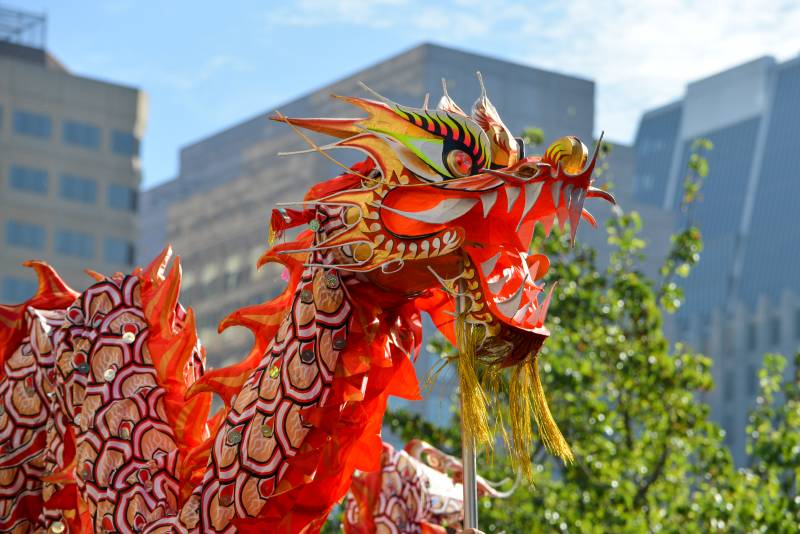
© » KQED
about 8 months ago (02/09/2024)
Happy Lunar New Year! 5 Things to Know About the Year of the Dragon | KQED Skip to Nav Skip to Main Skip to Footer upper waypoint Arts & Culture Happy Lunar New Year! 5 Things to Know About the Year of the Dragon Rae Alexandra Feb 9 Save Article Save Article Failed to save article Please try again Email The Year of the Dragon begins is upon us....

© » APERTURE
about 8 months ago (02/06/2024)
Taking a local, hometown look at the Chinese Spring Festival Shehuo, Zhang Xiao considers how the thousand-year-old tradition has transformed into a tourist-facing enterprise....
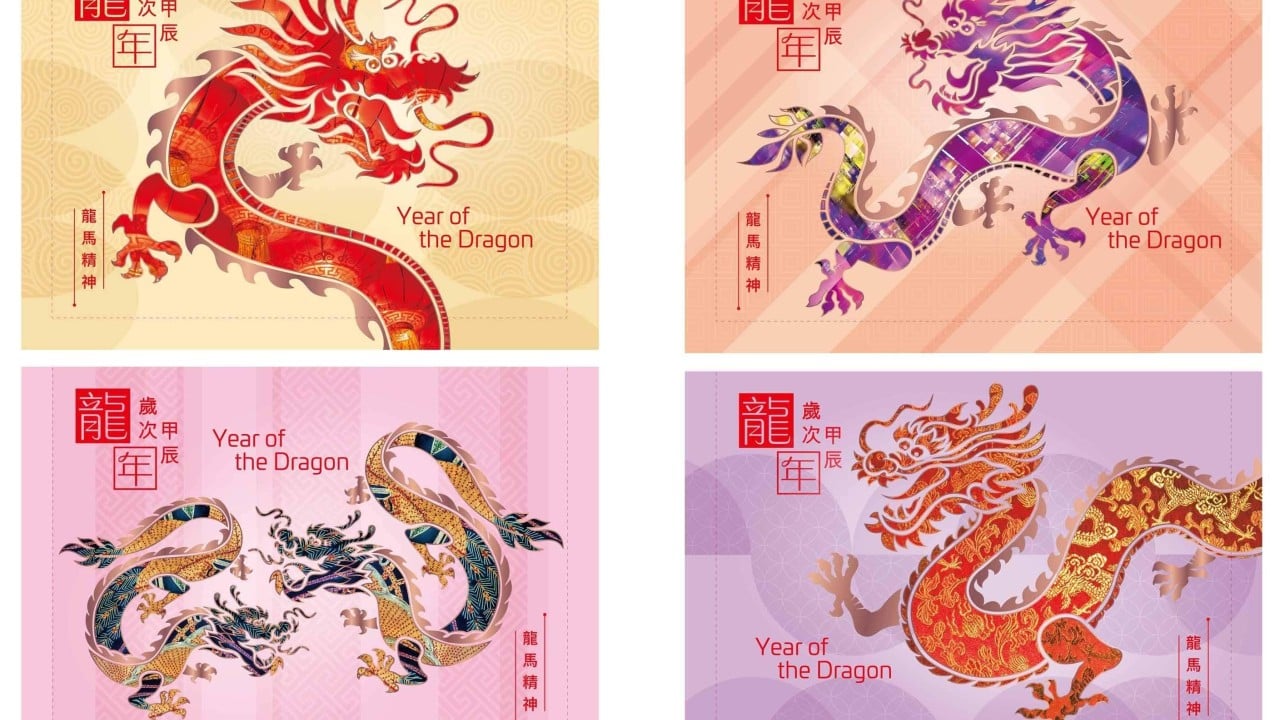
© » SOUTH CHINA MORNING POST
about 8 months ago (02/06/2024)
Following the furore over the United States Postal Service’s 2024 Year of the Dragon commemorative stamp, we look at rival stamp designs from Hong Kong, mainland China, Japan, Thailand and the Isle of Man....
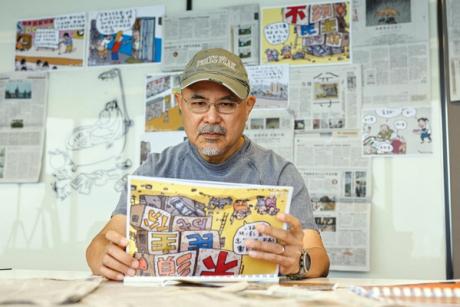
© » THEARTNEWSPER
about 8 months ago (02/05/2024)
Those who stay: the Hong Kong artists fighting for a brighter future Art market Museums & heritage Exhibitions Books Podcasts Columns Technology Adventures with Van Gogh Search Search Hong Kong analysis Those who stay: the Hong Kong artists fighting for a brighter future Despite governmental intimidation of arts entities, the high cost of living and the lure of better opportunities abroad, many artists are choosing to remain in the city Lisa Movius 5 February 2024 Share The satirical cartoonist Wong Kei-kwan, who uses the pen name Zunzi, had his comic strip in the Hong Kong newspaper Ming Pao cancelled following government pressure, but he continues to live in the city Photo: Reuters/Tyrone Siu Some call it the great exodus: the family company owners, the bankers and the expatriate businesspeople departing Hong Kong in droves during and since the Covid-19 years...

© » SOUTH CHINA MORNING POST
about 9 months ago (01/27/2024)
Book extract: historian sheds new light on Marco Polo’s China travels, which have often been doubted | South China Morning Post Book extract: historian sheds new light on Marco Polo’s China travels, which have often been doubted History Tall tales of the East told by Marco Polo have had their sceptics, but author Christopher Harding highlights details that make the explorer harder to doubt Christopher Harding + FOLLOW Published: 6:15pm, 27 Jan, 2024 Why you can trust SCMP Extracted from The Light of Asia: A History of Western Fascination with the East by Christopher Harding, published by Allen Lane, January 2024 *** “Honoured emperors and kings, dukes and marquesses, counts, knights and townspeople, and all who want to know about the various races of mankind and the peculiarities of the various regions of the world, take this book and have it read to you! “Here you will find all the greatest wonders and chief curiosities of Greater Armenia and Persia, of the Tartars and India, and of many other lands...

© » ASX
about 9 months ago (01/18/2024)
Max Pinckers & Thomas Sauvin – The Future Without You – AMERICAN SUBURB X Skip to content The introduction of computers in the workplace well prefigures the advent of the internet...

© » FRANCE24
about 9 months ago (01/11/2024)
Special programme: Taiwan's artists step out of China's shadow (part 1) - arts24 Skip to main content Special programme: Taiwan's artists step out of China's shadow (part 1) Issued on: 11/01/2024 - 15:18 Modified: 11/01/2024 - 15:27 12:51 FRANCE 24's Alison Sargent takes you to Taipei for a special programme on how the island's artists are stepping out of China's shadow...
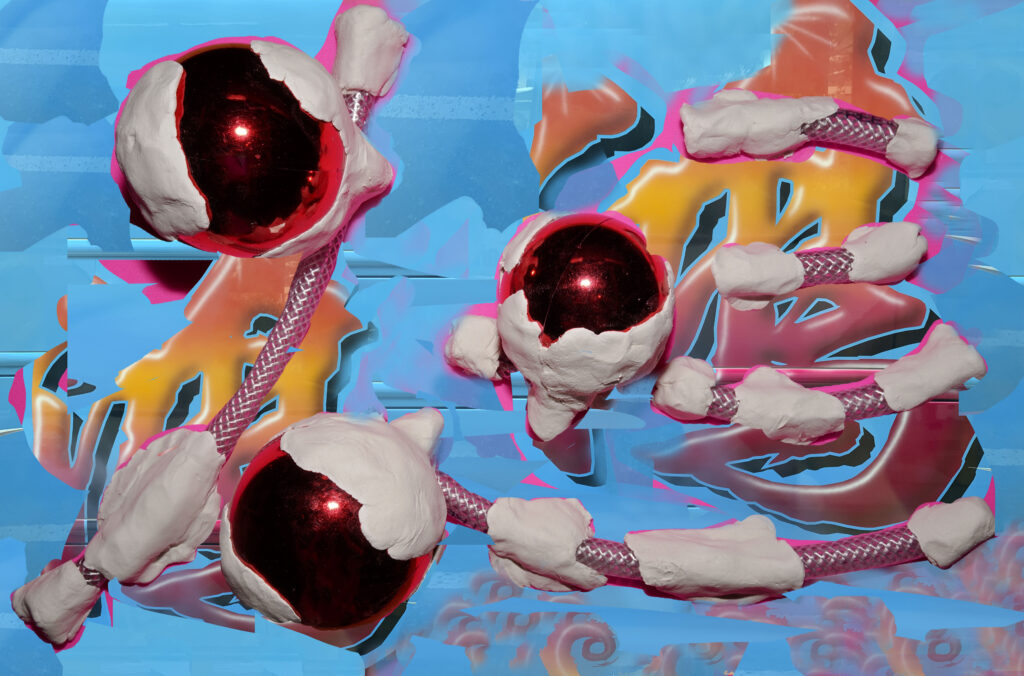
© » 1854 PHOTOGRAPHY
about 10 months ago (12/18/2023)
The Jimei × Arles festival is a feast – will it boost Chinese photography for good? - 1854 Photography Subscribe latest Agenda Bookshelf Projects Industry Insights magazine Explore ANY ANSWERS FINE ART IN THE STUDIO PARENTHOOD ART & ACTIVISM FOR THE RECORD LANDSCAPE PICTURE THIS CREATIVE BRIEF GENDER & SEXUALITY MIXED MEDIA POWER & EMPOWERMENT DOCUMENTARY HOME & BELONGING ON LOCATION PORTRAITURE DECADE OF CHANGE HUMANITY & TECHNOLOGY OPINION THEN & NOW Explore Stories latest agenda bookshelf projects theme in focus industry insights magazine ANY ANSWERS FINE ART IN THE STUDIO PARENTHOOD ART & ACTIVISM FOR THE RECORD LANDSCAPE PICTURE THIS CREATIVE BRIEF GENDER & SEXUALITY MIXED MEDIA POWER & EMPOWERMENT DOCUMENTARY HOME & BELONGING ON LOCATION PORTRAITURE DECADE OF CHANGE HUMANITY & TECHNOLOGY OPINION THEN & NOW Operating room party (Grand), 2022, from the series Baby’s Baby © Wu MeiChi Now in its ninth year, the festival brings works from Les Rencontres d’Arles alongside its own cutting-edge programme...

© » I-D
about 10 months ago (12/18/2023)
Seven creatives from Hangzhou share their experiences living through a generational paradigm shift....
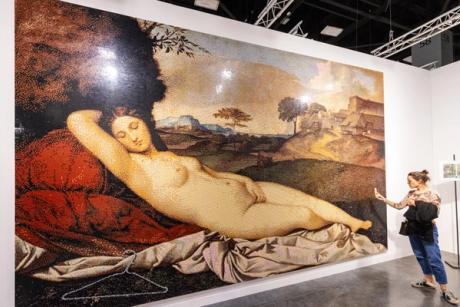
© » THEARTNEWSPER
about 10 months ago (12/07/2023)
Art history meets Lego in two of Ai Weiwei’s latest works Art market Museums & heritage Exhibitions Books Podcasts Columns Technology Adventures with Van Gogh Search Search Art Basel in Miami Beach 2023 news Art history meets Lego in two of Ai Weiwei’s latest works Chinese artist recreates two famous historic paintings using the hundreds of thousands of Lego bricks Alexander Morrison 7 December 2023 Share Ai Weiwei’s version of Giorgione’s Sleeping Venus is at Galleria Continua Photo: © Liliana Mora Visitors to Art Basel in Miami Beach making their way past Galleria Continua’s stand this week may find themselves doing a double take, as they encounter what looks like the Renaissance painter Giorgione’s Sleeping Venus (1510) made supersize...
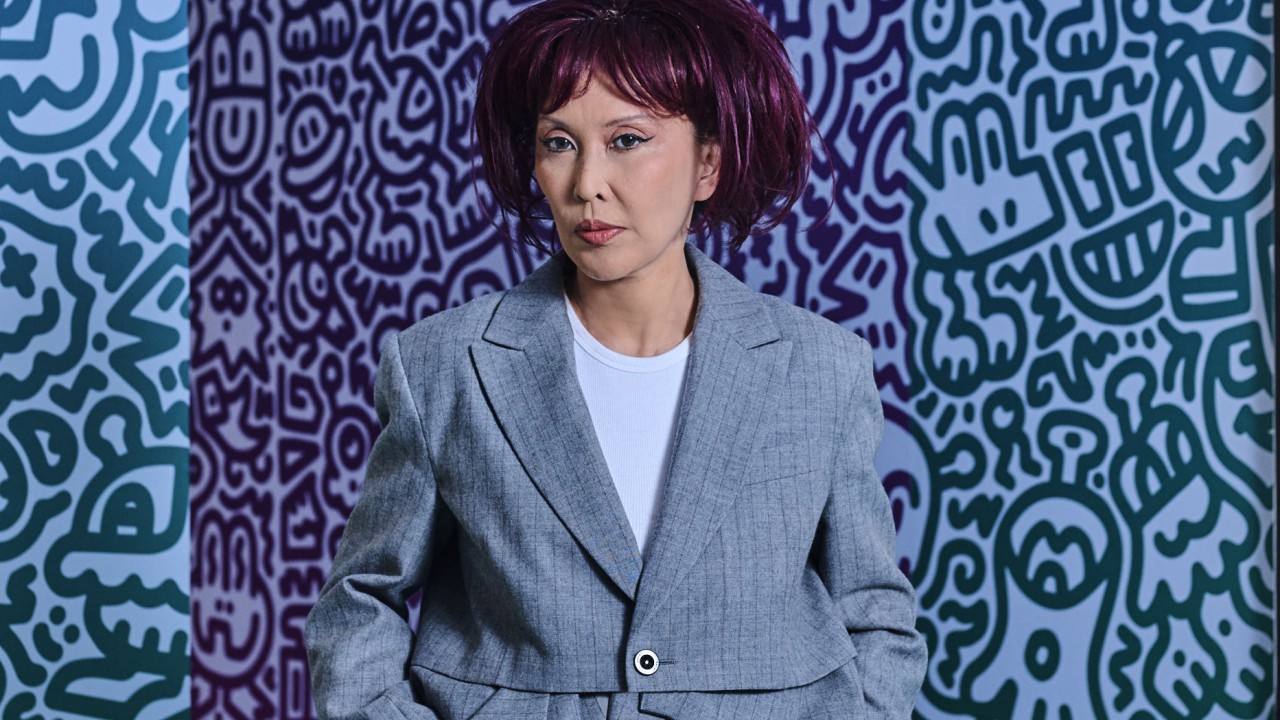
© » SOUTH CHINA MORNING POST
about 11 months ago (12/02/2023)
‘I thought I was god’s gift to China’: art gallery owner Pearl Lam on her ‘colonial attitude’ and embracing her ethnicity | South China Morning Post ‘I thought I was god’s gift to China’: art gallery owner Pearl Lam on her ‘colonial attitude’ and embracing her ethnicity Profile Art gallery owner Pearl Lam on growing up as the daughter of property tycoon Lim Por-yen, losing her colonial mindset and celebrating diversity Kate Whitehead + FOLLOW Published: 7:45am, 3 Dec, 2023 Why you can trust SCMP I was born in Hong Kong and lived in Jardine’s Lookout...

© » SOUTH CHINA MORNING POST
about 11 months ago (11/27/2023)
Floral art by Andy Warhol, Pablo Picasso, Claude Monet and other artists on display at private Deji Art Museum in Nanjing, China | South China Morning Post Advertisement Advertisement Art + FOLLOW Get more with my NEWS A personalised news feed of stories that matter to you Learn more The exhibition ‘Nothing Still About Still Lifes: Three Centuries of Floral Compositions’ at Nanjing;s Deji Art Museum features more than 100 modern and contemporary artworks, including (above) “Les Amoureux au Bouquet de Fleurs” (1935-1937), by Marc Chagall...
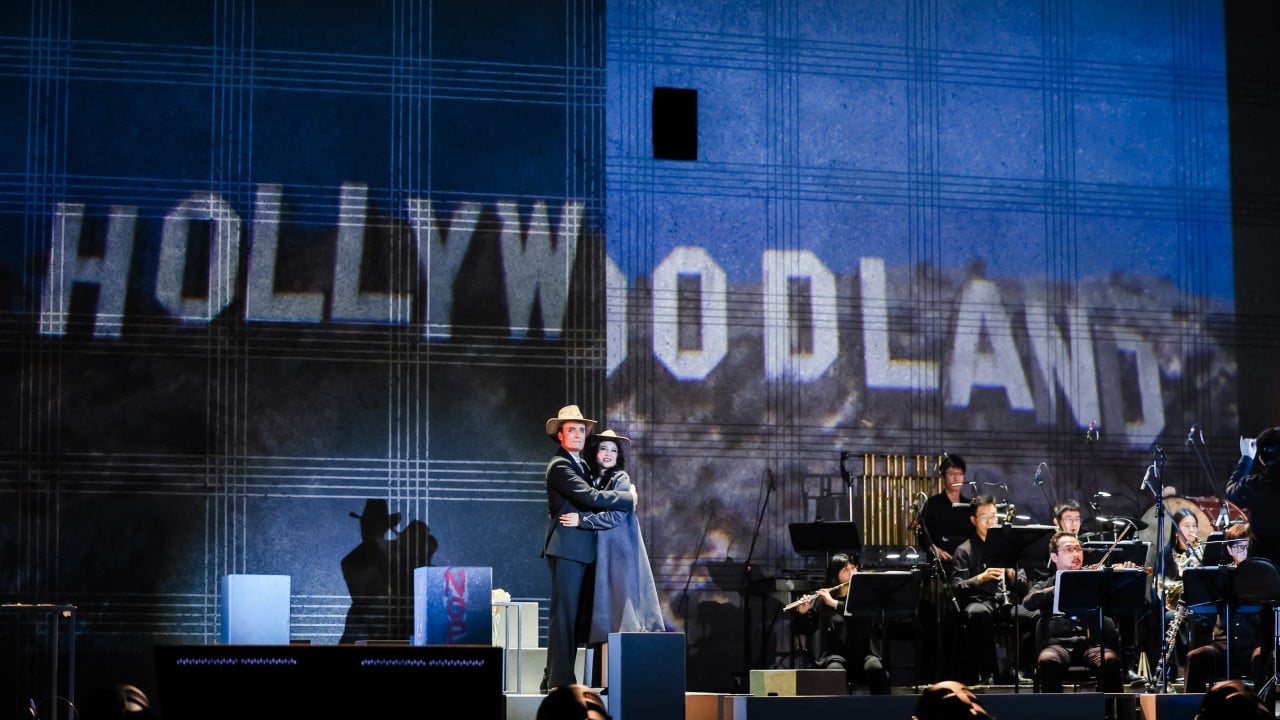
© » SOUTH CHINA MORNING POST
about 11 months ago (11/23/2023)
A conference in Shenzhen about Arnold Schoenberg saw the Chinese premiere of Tod Machover’s opera about the 20th century Austrian Jewish composer who pioneered atonal music and his exile in America....

© » FRANCE24
about 14 months ago (08/09/2023)
War of words over China breaks out on London graffiti wall - France 24 Skip to main content War of words over China breaks out on London graffiti wall Issued on: 09/08/2023 - 15:42 02:27 War of words over China breaks out on London graffiti wall (2023) © AFP / France 24 Video by: Juliette MONTILLY Follow Long renowned as a graffiti artist's heaven, Brick Lane in east London has found itself at the heart of a furious political debate overseas after a group of Chinese art students spray-painted Communist Party slogans over one of its walls...

© » LARRY'S LIST
about 25 months ago (10/05/2022)
Opening in March 2020, Shunde’s He Art Museum hopes that it has what it takes to attract an audience....

© » LARRY'S LIST
about 25 months ago (10/05/2022)
The collection’s owner, Maria Chen-Tu, has demanded the works’ return and alerted authorities in Beijing, but the works’ whereabouts remain unknown....
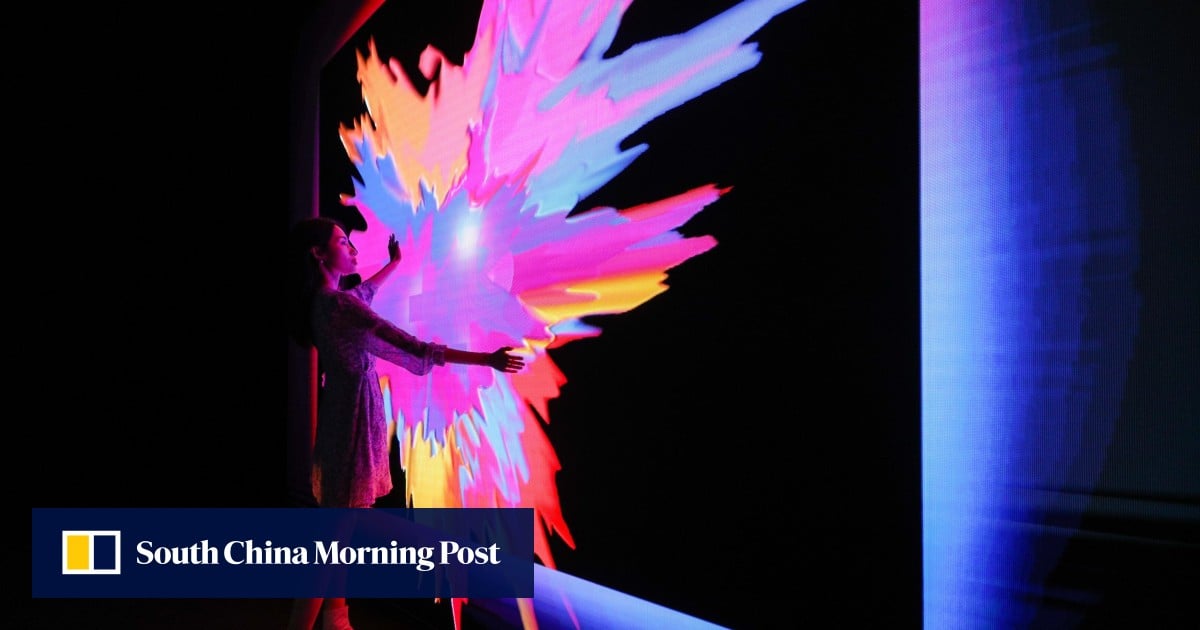
© » LARRY'S LIST
about 25 months ago (10/05/2022)
Shanghai is mainland China’s biggest art hub, and the new branch of the UCCA Centre for Contemporary Art, UCCA Edge, will celebrate the evolution of the city’s role....

© » LARRY'S LIST
about 25 months ago (10/05/2022)
Hong Kong Collector Adrian Cheng Expands to Mainland China with $1.4 B...
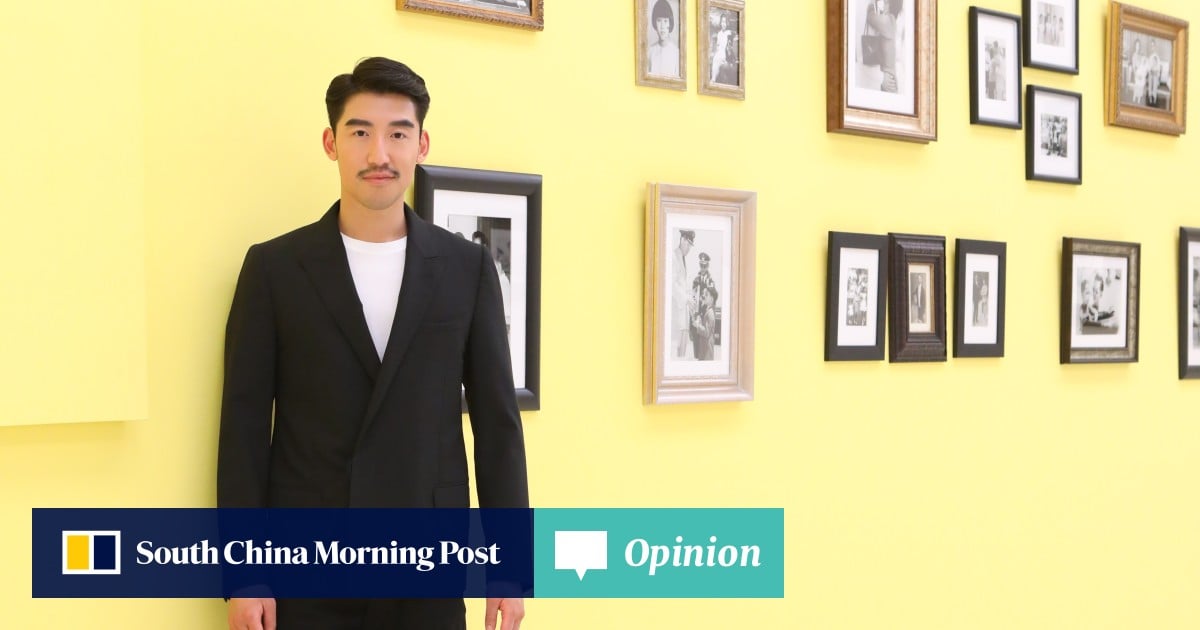
© » LARRY'S LIST
about 25 months ago (10/05/2022)
Founder of the Museum of Contemporary Art in the Thai capital, Boonchai Bencharongkul, hands the reins to his son, Kit, who plans to modernise, edit and expand the collection beyond Buddhist art....
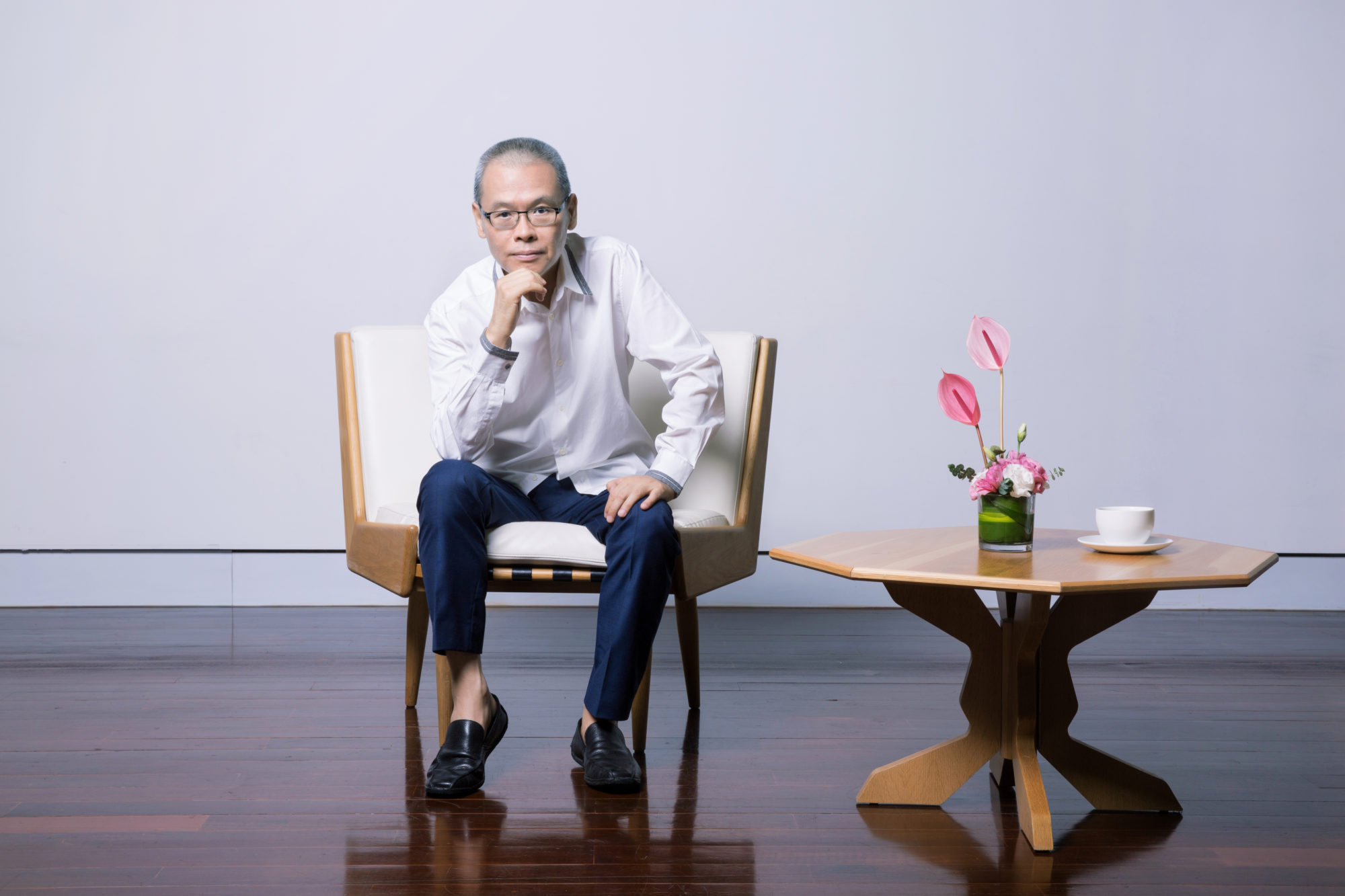
© » LARRY'S LIST
about 25 months ago (10/05/2022)
The Indonesian-Chinese collector spoke to artnet News's Andrew Goldstein about his urgent quest to save his groundbreaking private museum....
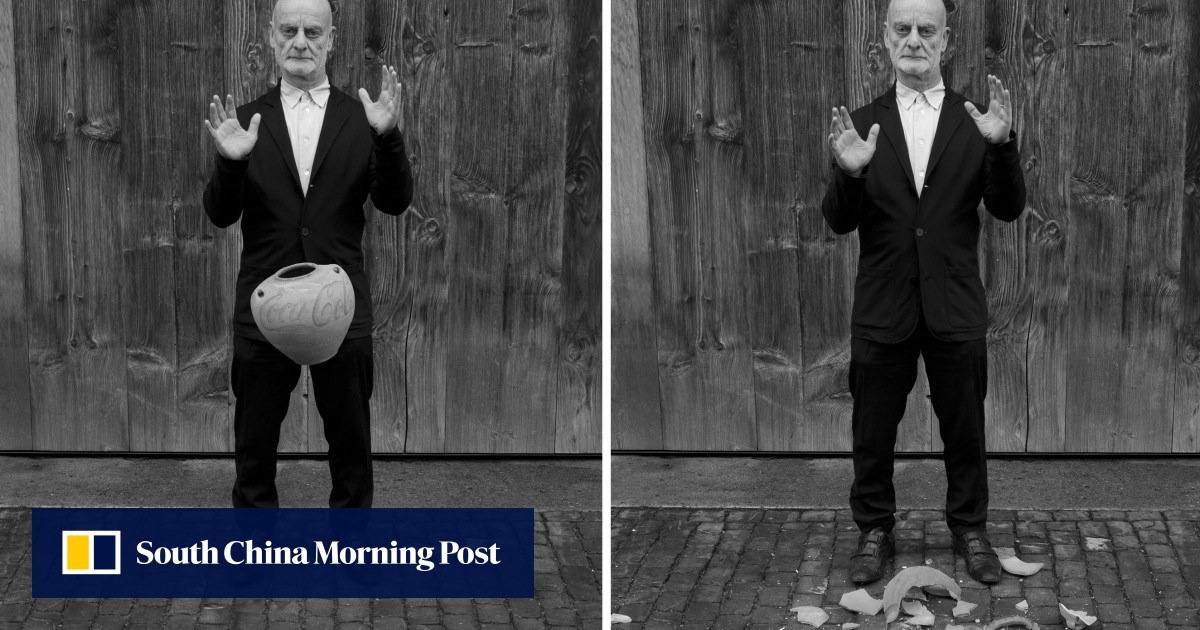
© » LARRY'S LIST
about 25 months ago (10/05/2022)
When Uli Sigg donated the bulk of his Chinese contemporary art collection to Hong Kong’s M+ museum in 2012, little did he know the controversy it would cause....
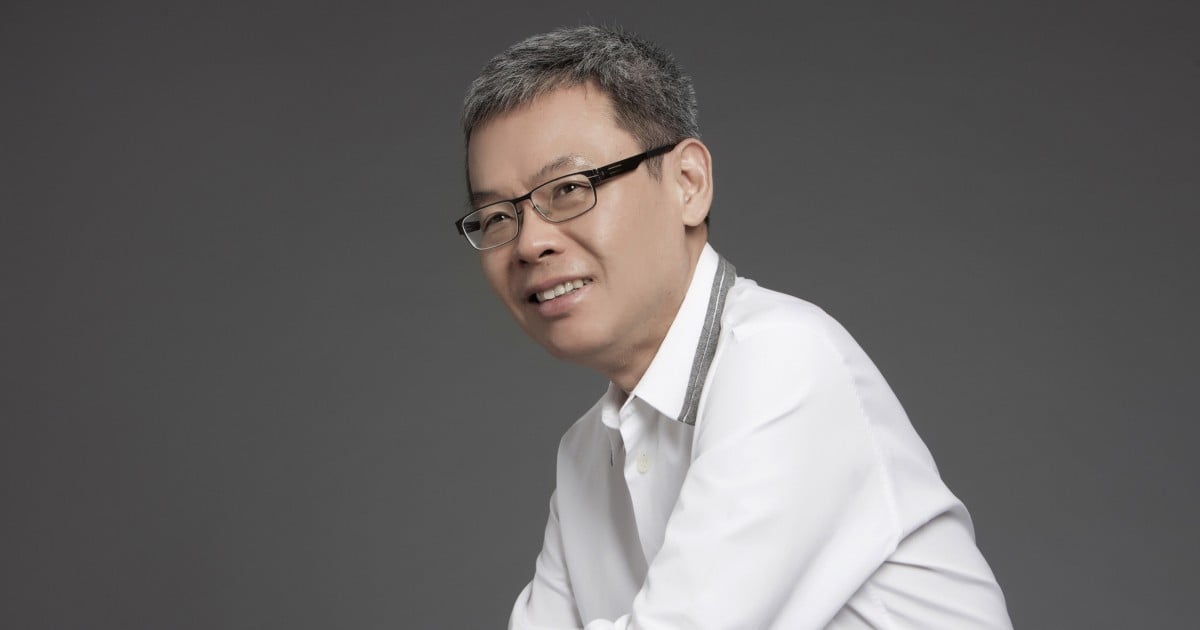
© » LARRY'S LIST
about 25 months ago (10/05/2022)
Budiardjo ‘Budi’ Tek, who died on March 18 aged 65, made his fortune in the poultry business, but he is best known for his Chinese art collection and for opening Shanghai’s Yuz Museum....

© » RANDIAN ZH
about 55 months ago (04/20/2020)
(English) Will any large exhibition or art fair take place in September...

© » ARTS EQUATOR
about 56 months ago (03/23/2020)
Interview with Wang Chong for "Made In China 2.0" | ArtsEquator Thinking and Talking about Arts and Culture in Southeast Asia Articles Mark Pritchard March 23, 2020 The following review is made possible through a Critical Residency programme supported by By Nabilah Said (1,000 words, 6-minute read) Experimental Chinese theatremaker Wang Chong presented a work-in-progress showing of his newest work, Made in China 2.0 , at Asia TOPA in February...
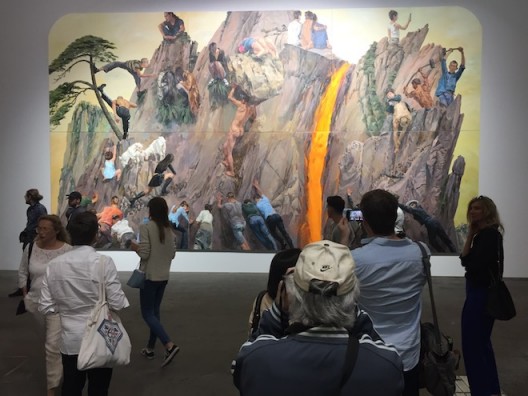
© » RANDIAN ART MARKET
about 62 months ago (09/03/2019)
by Chris Moore The China art market faces its most difficult period since 2008...

© » ARTS EQUATOR
about 77 months ago (06/25/2018)
Sarawak’s second Rainforest Fringe Festival aims to put indigenous traditions on the map (via South China Morning Post) | ArtsEquator Thinking and Talking about Arts and Culture in Southeast Asia ArtsEquator Radar June 25, 2018 The Rainforest Fringe Festival started in 2017 to spotlight Sawarak’s distinct jungle heritage...

© » ARTNEWS CN
about 141 months ago (03/20/2013)
Guggenheim Museum Collects China – ARTnews.com Skip to main content By Sarah Cascone Plus Icon Sarah Cascone View All March 20, 2013 1:10pm New York’s Solomon R...
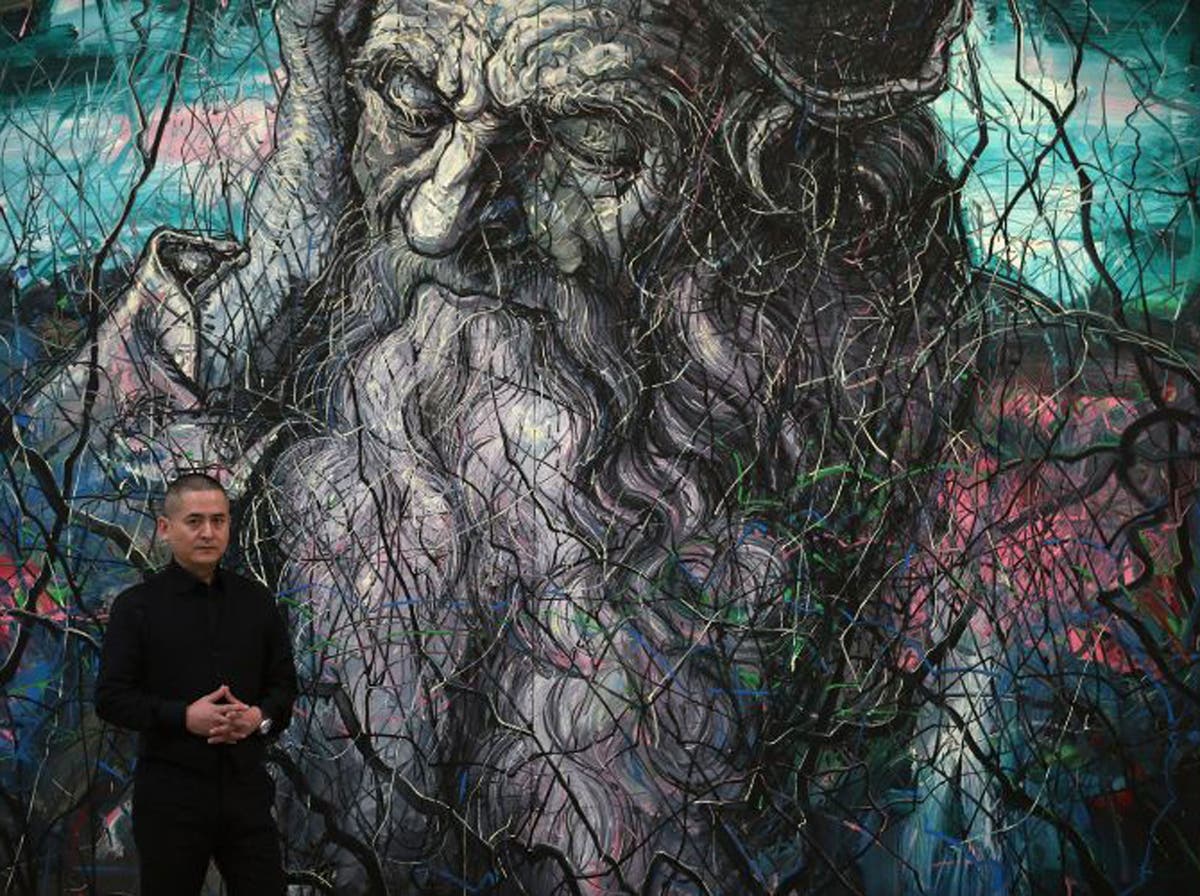
© » THE INDEPENDENT
about 145 months ago (11/16/2012)
Picture of the Day: The great wall from China | The Independent | The Independent Its simple name – "Head of an Old Man" – offers no hint of the scale or the mood of doom that so define this painting by Zeng Fanzhi, seen here standing in front of his epic work as his first solo British exhibition opens at the Gagosian Gallery in London, running until 19 January...

© » ARTNEWS CN
about 157 months ago (12/01/2011)
Turning Over a New Leaf – ARTnews.com Skip to main content By Lilly Wei Plus Icon Lilly Wei author View All December 1, 2011 11:00am It doesn’t look like an exhibition about dissent, at least not to contemporary eyes accustomed to more rousing images...

© » ARTNEWS CN
about 159 months ago (10/06/2011)
CHINA The Next Generation – ARTnews.com Skip to main content By Barbara Pollack Plus Icon Barbara Pollack View All October 6, 2011 10:00am Animal Regulation No...
-
-
2000-2009
Hong Hao
Drawing & Print
2000(Drawing & Print) Selected Scripture is a series of silkscreen prints that Hong Hao has been working on since the 1980s...
Lu Chunsheng
2004A mesmerizing experience of a vaguely familiar yet remote world, History of Chemistry I follows a group of men as they wander from somewhere beyond the edge of the sea through a vast landscape to an abandoned steel factory...
Xiaoyun Chen
2006The image of rusted nails, nuts and bolts as shrapnel sandwiched between a fried Chicken burger highlights the contrast between decadence and destruction...
Xiaoyun Chen
2006State Terrorism in the ultimate form of Pre-Raphaelite Brotherhood features a portrait of the artist wearing a zipped utilitarian jacket reminiscent of a worker’s uniform, with one arm behind his back as if forced to ingest a bundle of stick—a literal portrayal to the definition of fascism...
Chen Shaoxiong
2006After engaging primarily with video and photography for more than a decade, Chen turned to painting to explore the issue of urban change and memories—both personal and collective...
Qing Zhang
2006603 Football Field presents a soccer game played inside a small student apartment in Shanghai...
Ruijun Shen
2006In Seven Deadly Sins (2006), Shen utilizes abstraction to produce complex topographies of color that evoke associations with violently tumultuous landscapes...
Jianwei Wang
2007In Dilemma: Three Way Fork in the Road , Wang references Peking opera in a re-interpretation of traditional text...
Kwan Sheung Chi
2007A Flags-Raising-Lowering Ceremony at my home’s cloths drying rack (2007) was realized in the year of the 10th anniversary of the establishment of The Hong Kong Special Administrative Region of the People’s Republic of China...
Chen Shaoxiong
2007After engaging primarily with video and photography for more than a decade, Chen turned to painting to explore the issue of urban change and memories—both personal and collective...
Jiang Pengyi
2008Unregistered City is a series of eight photographs depicting different scenes of a vacant, apparently post-apocalyptic city: Some are covered by dust and others are submerged by water...
Zhang Peili
2008In the video installation A Gust of Wind , Zhang continues to explore notions of perspective and melds them seamlessly with a veiled but incisive social critique...
Pak Sheung Chuen
2008Pak created New York Public Library Projects (NYPLP) (2008) during a residency in New York, using public libraries as exhibition spaces and the books they house as raw materials...
Charwei Tsai
2008Charwai Tsai’s photograph documents her Hermit Crab Project installation upon the construction site of gallery Sora in Tokyo...
Gao Mingyan
2008In City Golf (2008) the artist Gao Mingyan films himself playing 18 “holes” of golf throughout the mega-city of Shanghai...
Xijing Men
2008Welcome to Xijing – Xijing Olympics is the third of five chapters in the Xijing series...
Wong Wai Yin
2008In this work the artist stages a humorously violent “intervention” against male-dominated cultures of art production in present-day China...
Yang Xinguang
2009Although seemingly unadorned at first glance, Yang Xinguang’s sculptural work Phenomena (2009) employs minimalist aesthetics as a means of gesturing towards the various commonalities and conflicts between civilization and the natural world...
-
2010-2019
Du Zhenjun
2010The Tower of Babel is an installation of large-format photographs that forces the audience to occupy a central position through its monumental scale...
Du Zhenjun
2010The Tower of Babel is an installation of large-format photographs that forces the audience to occupy a central position through its monumental scale...
Du Zhenjun
2010The Tower of Babel is an installation of large-format photographs that forces the audience to occupy a central position through its monumental scale...
Shahzia Sikander
2010The Last Post was inspired by Sikander’s ongoing interest in the colonial history of the sub-continent and the British opium trade with China...
Chen Chieh-Jen
2010Empire’s Borders II – Passage and Empire’s Borders II – Workers are from the three-channel film installation Empire’s Borders II – Western Enterprise, Inc...
Chen Chieh-Jen
2010Empire’s Borders II – Passage and Empire’s Borders II – Workers are from the three-channel film installation Empire’s Borders II – Western Enterprise, Inc...
Leung Chi Wo and Wong Sara
2010Photojournalist with Two Cameras restages a portrait of a photojournalist from the background of an old photograph of protest published in South China Morning Post on January 10, 2010 under the headline “Return of the Radicals: Recent angry protests are nothing new.” The photojournalist in the photograph, probably from a protest of earlier decades, was capturing the scene of a protester’s arrest while wearing two cameras...
Leung Chi Wo and Wong Sara
2010Office Lady with a Red Umbrella restages a figure from a 1980 postcard made from a photograph from 1950’s...
Yang Guangnan
2011Itch explores the relationship between technology and daily human experience with a motorized arm that extends from within the gallery’s wall, moving up and down while holding a projector that shows a desperately scratching pair of hands....
Qiu Anxiong
2011A Portrait: Covering and Cleaning is an installation of six black-and-white video projections...
Zhang Kechun
2011Zhang Kechun’s photographic series The Yellow River documents the effects of modernization along the eponymous Yellow River, the second longest in Asia...
Huang Xiaopeng
2011Four knives appearing as if thrown at the wall to alleviate frustration and boredom, form rhythmic shadows and markings of time above a translated phrase boldly printed in simplified Chinese and English...
Yang Zhenzhong
2012Peasant Sensation Passing Through Flesh – 3 consists of a massage chair fixed to a wall...
Xiaoyun Chen
2012The lengthy titles in Chen Xiaoyun’s work often appear as colophons to his photographs that invite the viewer to a process of self realization through contemplating the distance between word and image...
Kwan Sheung Chi
2012Kwan Sheung Chi’s work One Million is a video work depicting the counting of bills...
Adrian Wong
2012Untitled (Grate I/II: Shan Mei Playground/ Grand Fortune Mansion) is part of a series drawn from architectural objects that mark the boundary of public and private spaces Wong encountered while strolling in Hong Kong...
Zhang Kechun
2012Zhang Kechun’s photographic series The Yellow River documents the effects of modernization along the eponymous Yellow River, the second longest in Asia...
James T. Hong
2012Taiwan WMD (Taiwan and Weapons of Mass Destruction) is part of a long-term research started in early 2010 on the history and aftermath effects of Japanese biological and chemical warfare in China during WWII, as well as the unknown history of Taiwan’s nuclear program...
Chia-Wei Hsu
2012Marshal Tie Jia (Turtle Island) explores the history of a tiny island off of the coast of Matsu in the Taiwan Strait that has been instrumental in the geopolitical relationships between China, Taiwan, and Japan...
Yangjiang Group
Drawing & Print
2012(Drawing & Print) One Day in the Mountain is a bilingual calligraphic performance piece written in ink superimposed with food leftover from a meal...
Koki Tanaka
2013This artwork was part of a group of projects presented in the Japanese Pavilion at the Venice Biennale in 2013...
Xiaoyun Chen
2014The central point of Vanishing Point is the most direct physiological reaction of the body to the environment...
Mimian Hsu Chen
2014In Hsu’s work, Colonia China (2014), the artist documents a Chinese cemetery of Costa Rica’s Limón Province, along the country’s Caribbean coast...
Liu Chuang
2014Categorized as low-level literature, a “Love Stories” book is a romantic popular fiction of proletariat China, read mainly by teenagers, students, and young workers...
Tomoko Kikuchi
2014The series Funerals under Neon Lights by Tomoko Kikuchi focuses on how transgender people’s ritual became a vital part of funerals in rural China...
Thu Van Tran
2014From Green to Orange is a series of silver films immersed in a bath of dye and rust...
Meiro Koizumi
2015Words by Meiro Koizumi: “The video installation work In the State of Amnesia is made with Mr...
Miao Ying
2016As part of her project Chinternet Plus , a “counterfeit ideology” and parodic take on the strategy “Internet Plus” launched by Chinese Prime Minister Li Keqiang in 2015, the video work Post commentary, monetary likes, Morgan Freeman’s advice on reality gives an insight into Internet Culture in China...
Danielle Dean
2016In 2003, Nike released a pair of red and black sneakers (the Dunk Low Pro SB ) that were marketed as “vampire” sneakers...
Pak Sheung Chuen
Drawing & Print
2017(Drawing & Print) The series Nightmare Wallpapers represents a shift if Chuen’s practice, allowing the artist to immerse himself in an “artistic pilgrimage of self healing” following the failure of the 2014 Umbrella Movement...
Zhang Zhenyu
2018In DUST 171217 Zhang Zhenyu uses fragments of dust collected across the city, and then creates dark abstract paintings, repetitively gluing the material to the canvas, applying up to 30 or 100 layers and sanding until he arrives at a smooth surface...
Connie Zheng
2019The Lonely Age by Connie Zheng is the first chapter in a trilogy of short experimental films about the complex temporalities of navigating ongoing environmental crises, as seen through the lens of seeds real and imagined...
Musquiqui Chihying and Gregor Kasper
2019Addressing the legacy of colonialism, The Guestbook by Musquiqui Chihying and Gregor Kasper is a slow-paced, black-and-white film exploring the German colony of Togoland, now the Republic of Togo...
He Xiangyu
2019He Xiangyu’s Terminal 3 presents excerpts from the lives of young African acrobats attending the Hebei Wuqiao Acrobatic Arts School in China...
Wang Mowen
2019In Trinity , Wang Mowen uses video to tell the story of a young woman who wants to know the whereabouts of a person born sixty years ago...
Musquiqui Chihying
2019The Sculpture by Musquiqui Chihying comprises a two-channel lecture performance and a photograph...
Mandy El-Sayegh
2019Mandy El Sayegh grew up in a medicalized environment, surrounded by anatomy, biology and psychology publications; these books inspire the figures that appear throughout her work...
-
2020-2029
Pu Yingwei
2020ChinaCapital: Dream, Hot Land, Interstellar Colonization by Pu Yingwei addresses a complicated phenomena of intertwined influences from different political powers, capital forces, and ideologies in the reality of China...
Zhang Kechun
2020Zhang Kechun’s photographic series The Yellow River documents the effects of modernization along the eponymous Yellow River, the second longest in Asia...
Jung Yoonsuk
2020Tomorrow by Jung Yoonsuk is a two-channel video installation, observing the two different sites of factories, one in the mannequin reform factory in Seoul, Korea, and the other in a sex doll factory in Shenzhen, China...
Köken Ergun and Satyam Mishra
2022Nepal and China signed an agreement for the Belt and Road Initiative (BRI) in 2017...
Köken Ergun and Tashi Lama
2022Nepal and China signed an agreement for the Belt and Road Initiative (BRI) in 2017...
Köken Ergun and Satyam Mishra
2022Nepal and China signed an agreement for the Belt and Road Initiative (BRI) in 2017...
Yuyan Wang
2022The Moon Also Rises by Yuyan Wang comprises a one-channel video and light installation...
Risham Syed
2022Risham Syed discovered a box of woven Chinese silk panels that was her mother’s most prized possession...

